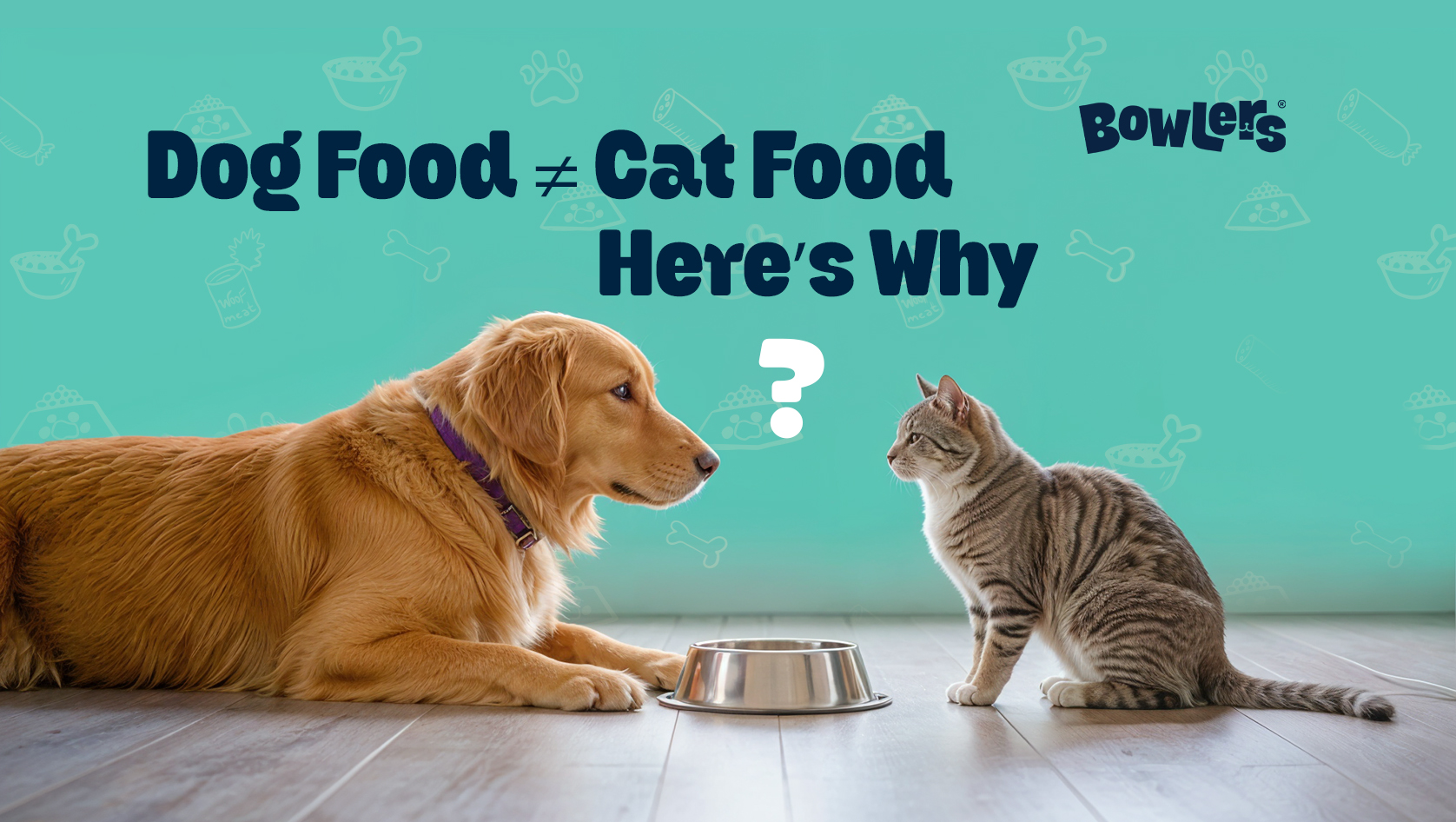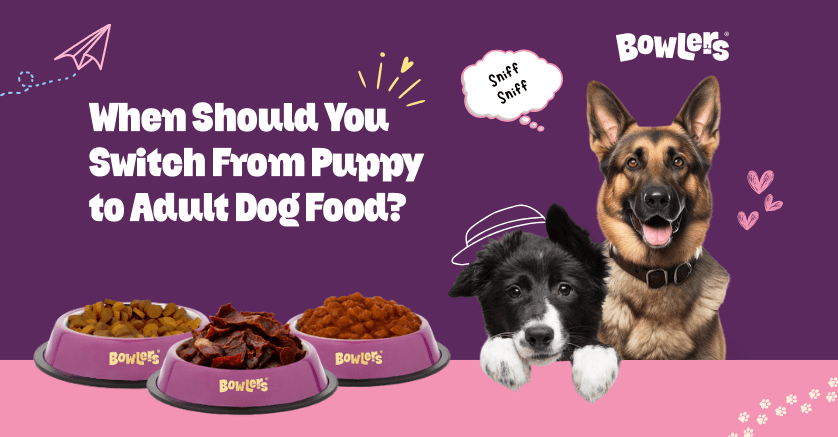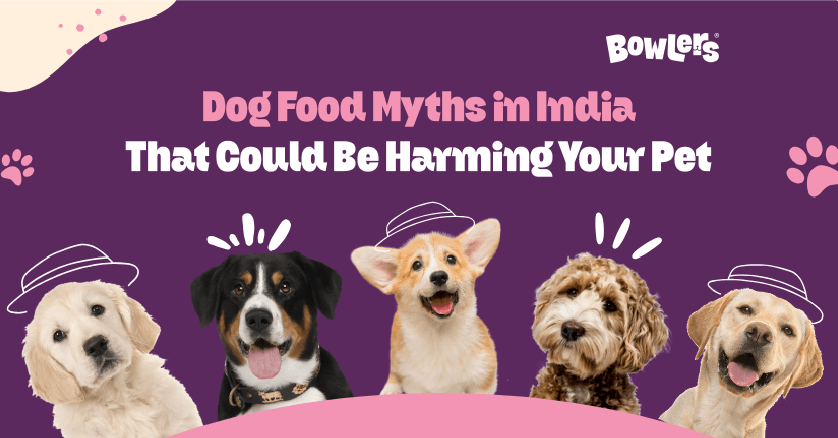Key Nutritional Differences Between Dog and Cat Food

Table of contents
- Dog vs Cat Food Nutrition: The Core Differences
- Why Cats Cannot Live on Dog Food
- Why Dogs Should not Eat Cat Food Regularly
- Can Dogs Eat Cat Food and Vice Versa?
- Nutritional Differences in Cat and Dog Food Ingredients
- Tips for Multi-Pet Households
- What to Do If Your Cat Accidentally Eats Dog Food
- Is Wet Dog Food Safer for Cats Than Dry Dog Food?
- FAQs: Difference Between Dog Food and Cat Food
- 1. Why do cats need more protein than dogs?
- 2. Can I feed my dog cat food if I run out?
- 3. Why is taurine not added to dog food?
- 4. Can dog food cause health issues in cats?
- 5. How do I stop my cat from eating dog food?
When it comes to feeding your pets, dog food and cat food are not interchangeable. While they might look similar in shape and texture, the difference between dog food and cat food lies in their nutritional makeup designed to meet each species’ unique dietary needs.
Understanding these differences helps you avoid health problems, especially in multi-pet households where cats and dogs share space (and sometimes sneak each other’s meals!).
Dog vs Cat Food Nutrition: The Core Differences
Cats are obligate carnivores, meaning they must eat meat to survive. Dogs are omnivores, able to digest a combination of meat, grains, fruits, and vegetables.
| Nutrient/Factor | Cat Food | Dog Food |
|---|---|---|
| Protein Content | High – cats need more protein | Moderate – lower than cats |
| Taurine | Added in high amounts, essential for cats | Not added/minimal – dogs can produce |
| Vitamin A | Preformed, required in diet | Derived from beta-carotene – dogs can convert |
| Arachidonic Acid | Required in diet | Dogs can synthesize it |
| Carbohydrates | Low – cats aren’t adapted to high carbs | Moderate to high – dogs tolerate well |
| Calories | Higher calorie density – generally true, but product-specific (so broadly reasonable) | Lower density – generally true but also variable |
Note: Calorie density can differ widely based on brand and formulation;
Why Cats Cannot Live on Dog Food
Feeding cats dog food long-term can lead to:
- Taurine deficiency → blindness, heart issues
- Vitamin A deficiency → skin, coat, and vision problems
Arachidonic acid deficiency → poor skin health and slow wound healing
Why Dogs Should not Eat Cat Food Regularly
While a few bites of cat food won’t hurt, regular feeding can cause:
- Obesity (due to higher fat and calorie content)
- Pancreatitis from excessive fat intake
- Digestive upset such as vomiting or diarrhea
Can Dogs Eat Cat Food and Vice Versa?
- Short-term: Usually harmless for healthy pets if it’s a one-off accident.
- Long-term: Leads to nutrient imbalances and health problems.
Nutritional Differences in Cat and Dog Food Ingredients
- Protein Sources
- Cat food: More meat-based protein
- Dog food: Mix of meat, grains, and plant proteins
- Fat Content
- Cats: Higher fat for energy
- Dogs: Lower fat to prevent obesity
- Essential Nutrients
- Taurine, Vitamin A, Arachidonic Acid → crucial for cats, not for dogs
- Texture and Palatability
- Cat food: Stronger aroma, richer taste to entice picky eaters
- Dog food: Balanced flavor profile
Tips for Multi-Pet Households
If you have both dogs and cats at home:
- Feed them in separate rooms to prevent stealing
- Use microchip feeders that open only for the right pet
What to Do If Your Cat Accidentally Eats Dog Food
If it is just a few bites, no panic. But if your cat eats dog food for more than 2-3 days, switch back to cat food immediately and watch for:
- Lethargy
- Weight loss
- Coat dullness
Is Wet Dog Food Safer for Cats Than Dry Dog Food?
Not necessarily. While wet dog food might be easier to chew, it still lacks essential cat-only nutrients. Learn more in our guide: “Is Wet Dog Food Safer for Cats Than Dry Dog Food?“.
FAQs: Difference Between Dog Food and Cat Food
1. Why do cats need more protein than dogs?
Cats use protein as their main energy source and require specific amino acids (like taurine) only found in meat.
2. Can I feed my dog cat food if I run out?
Only in emergencies and only for a day or two. In the long term, feeding cat food to dogs can lead to nutritional deficiencies See our full emergency feeding guide here: “Can You Mix Dog and Cat Food in Emergency Situations?“.
3. Why is taurine not added to dog food?
Dogs can synthesize taurine from other amino acids, so it’s not an essential dietary addition for them.
4. Can dog food cause health issues in cats?
Yes, prolonged feeding leads to nutrient deficiencies, vision loss, and heart problems.
5. How do I stop my cat from eating dog food?
Feed separately, use pet-specific feeders, and remove bowls after mealtime.


